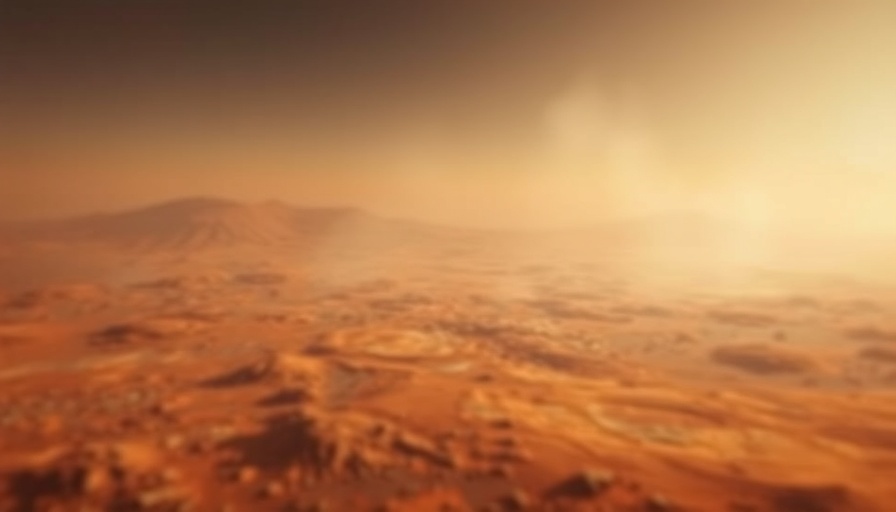
Unveiling Mars's Volcanic Secrets
NASA's 2001 Mars Odyssey orbiter has unveiled a captivating panoramic image showcasing the mighty Arsia Mons, an ancient volcano soaring majestically through a blanket of clouds just before dawn. This remarkable snapshot, taken on May 2, 2025, not only highlights Mars’s stunning topography but also marks a significant advancement in our understanding of the Red Planet’s atmosphere.
The Tharsis Mountains: A Geological Marvel
Arsia Mons is part of the Tharsis Montes, a formation that includes two other colossal volcanoes. Rising approximately 12 miles (20 kilometers) into the Martian sky, Arsia Mons is nearly twice the height of Earth's tallest volcano, Mauna Loa. This geological wonder is situated in a region that frequently experiences water ice clouds, particularly during the early hours when Mars awakens to the sun. The imagery captured by the Odyssey provides a unique perspective akin to what astronauts observe from the International Space Station.
A Historic Mission in Action
The Mars Odyssey holds the title of the longest-running mission orbiting another planet. Initiated in 2001, its scientific pursuits evolved in 2023 when it began capturing high-altitude images of the Martian horizon. This shift in focus allows scientists to analyze varying seasonal patterns and atmospheric dynamics, significantly enhancing our understanding of Martian weather phenomena such as dust storms.
The Importance of Understanding Mars's Atmosphere
Understanding the intricacies of Mars's clouds is crucial for scientists trying to decipher the planet’s weather patterns and atmospheric evolution. These insights are particularly vital for future Mars missions, particularly those involving landing operations. NASA's planetary scientist Michael D. Smith noted that the seasonal variations observed in the horizon images provide new clues about how Mars's atmosphere changes over time, helping shape the strategies for future exploration efforts.
Martian Matters: What This Means for Space Exploration
The continued observation of Mars's weather provides significant implications for both current and future missions. As we learn more about the Martian atmosphere, we can refine our approaches to landing and navigating on the surface. The information gleaned from missions like the Mars Odyssey contributes to the larger body of knowledge that will inform human exploration of Mars, potentially for colonization, scientific research, and resource utilization.
What Lies Ahead? Future Trends in Mars Exploration
The breathtaking imagery from missions like the Mars Odyssey not only captures the imagination of audiences on Earth but also paves the way for innovative exploration technologies. As we look towards the future, the integration of advanced data analysis, alongside enhanced imaging techniques, promises to illuminate even more hidden aspects of Mars’s geology and environment. The ongoing research and advancements could lead to groundbreaking discoveries about the potential for life and sustainable living on Mars.
 Add Row
Add Row  Add
Add 




Write A Comment